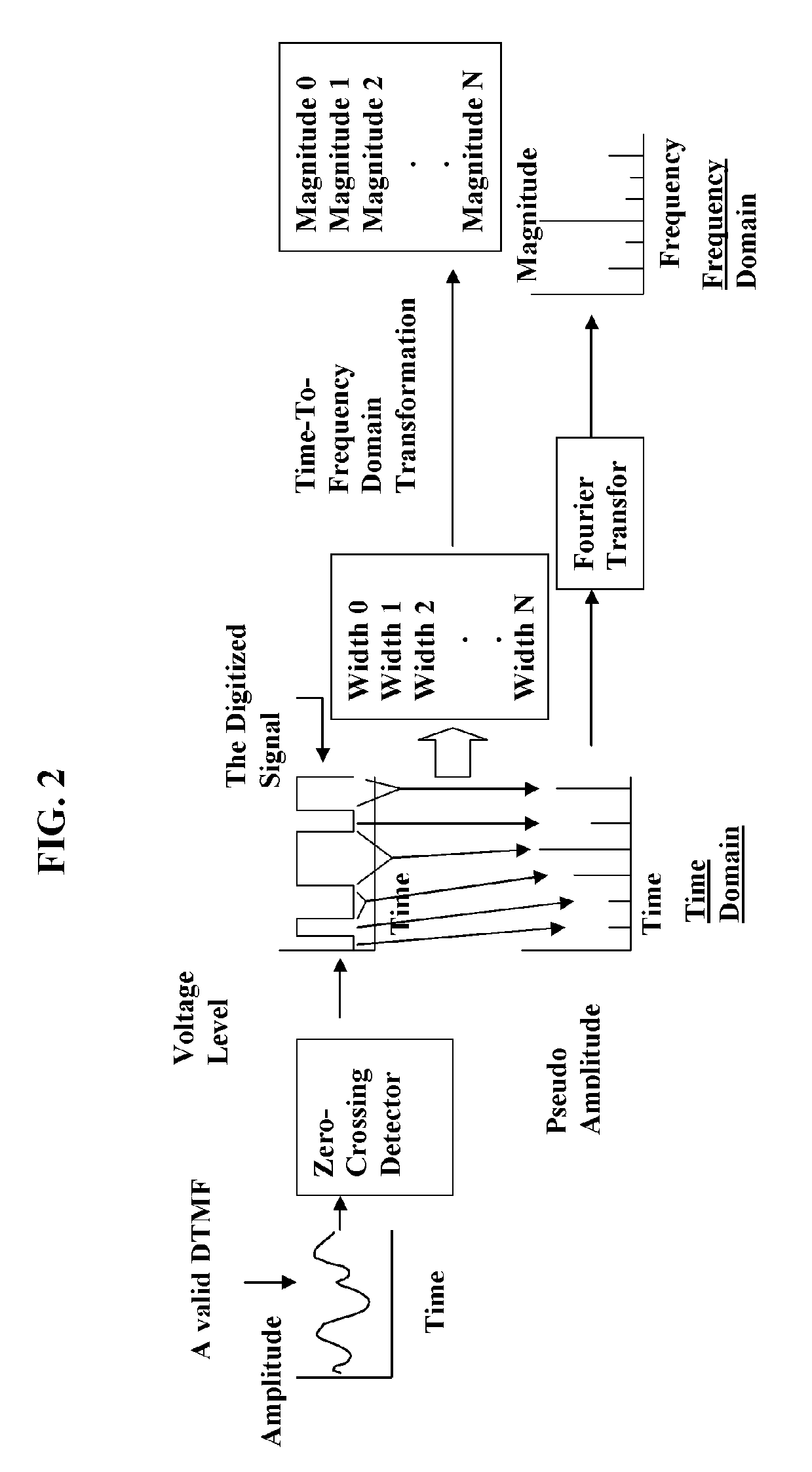Method and apparatus for decoding DTMF tones
a technology of dtmf and tones, applied in electrical equipment, manual exchanges, substation equipment, etc., can solve the problems of difficult synchronization and timing, cost of non-standard cycle length, and inability to detect and recognize dtmf with satisfactory precision, and achieve accurate decoding of dtmf data
- Summary
- Abstract
- Description
- Claims
- Application Information
AI Technical Summary
Benefits of technology
Problems solved by technology
Method used
Image
Examples
Embodiment Construction
[0027] An understanding of the present invention requires an understanding of the Fourier Transform. See, for example, Ronald N. Bracewell, “The Fourier Transform,”Scientific American, June 1989, pp. 86-95. The human ear automatically and involuntarily performs a calculation that takes the intellect years of mathematical education to accomplish. The ear formulates a transform by converting sound—the waves of pressure traveling over time and through the atmosphere—into a spectrum, a description of the sound as a series of volumes at distinct pitches. The brain then turns this information into perceived sound.
[0028] A similar conversion can be done using mathematical methods on the same sound waves or virtually any other fluctuating signal that varies with respect to time. The Fourier transform is the mathematical tool used to make this conversion. Simply stated, the Fourier transform converts waveform data in the time domain into the frequency domain. The Fourier transform accomplis...
PUM
 Login to View More
Login to View More Abstract
Description
Claims
Application Information
 Login to View More
Login to View More - R&D
- Intellectual Property
- Life Sciences
- Materials
- Tech Scout
- Unparalleled Data Quality
- Higher Quality Content
- 60% Fewer Hallucinations
Browse by: Latest US Patents, China's latest patents, Technical Efficacy Thesaurus, Application Domain, Technology Topic, Popular Technical Reports.
© 2025 PatSnap. All rights reserved.Legal|Privacy policy|Modern Slavery Act Transparency Statement|Sitemap|About US| Contact US: help@patsnap.com



